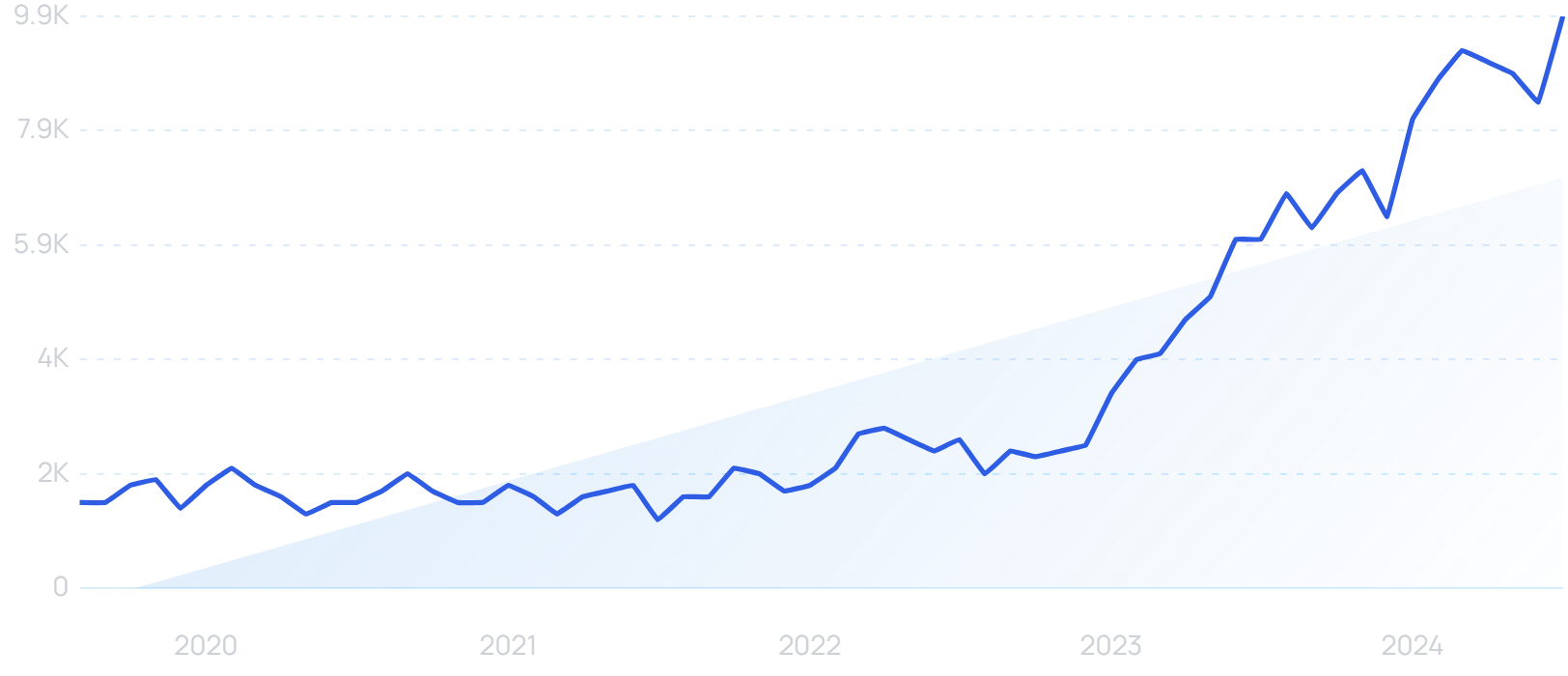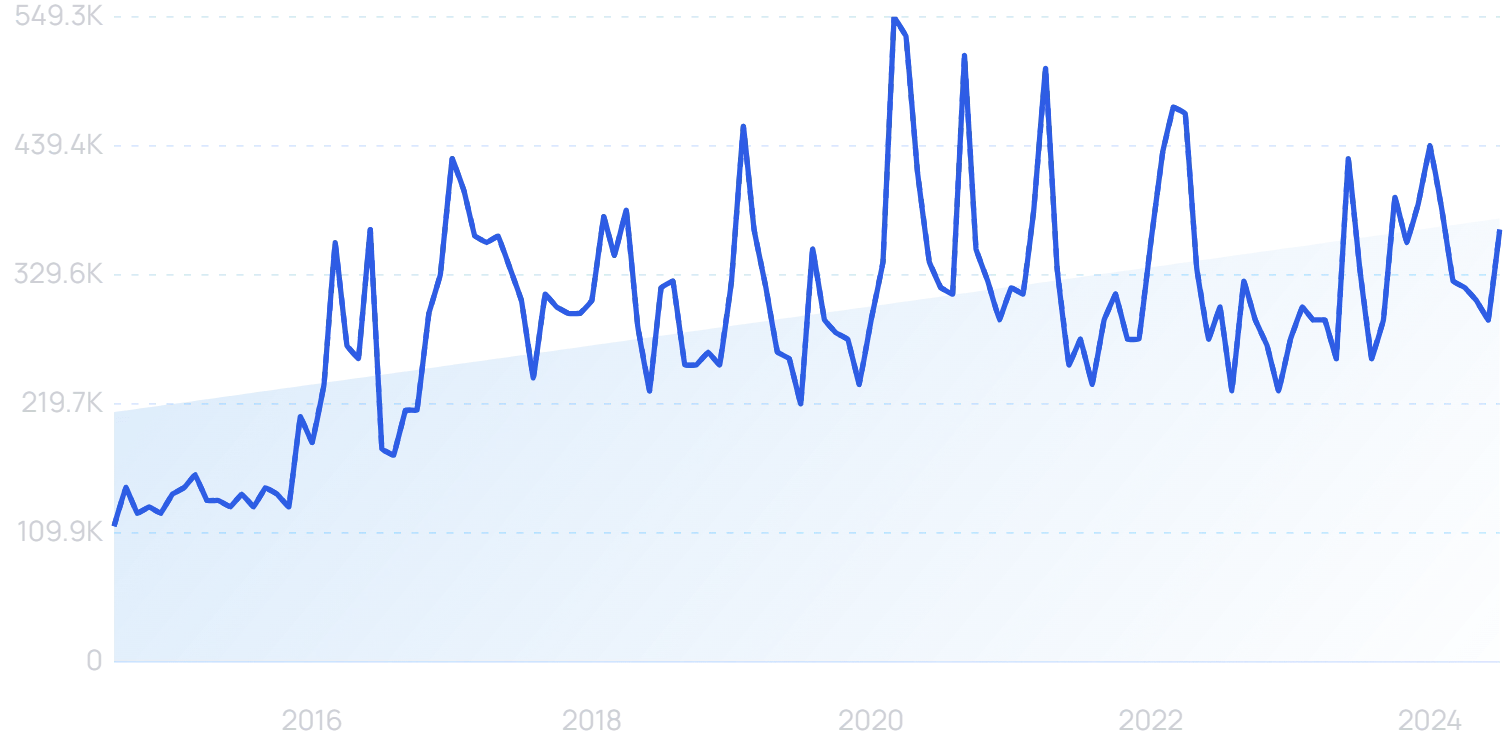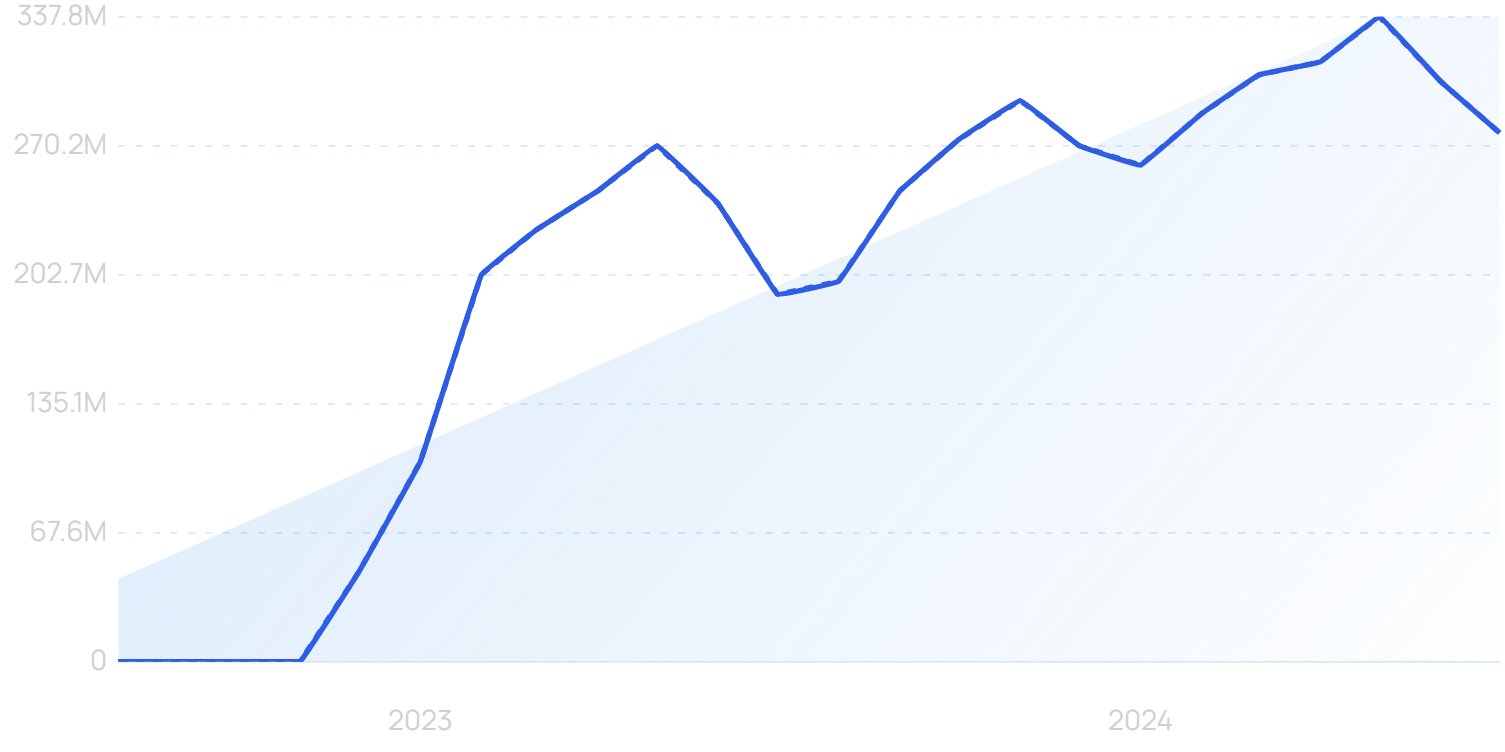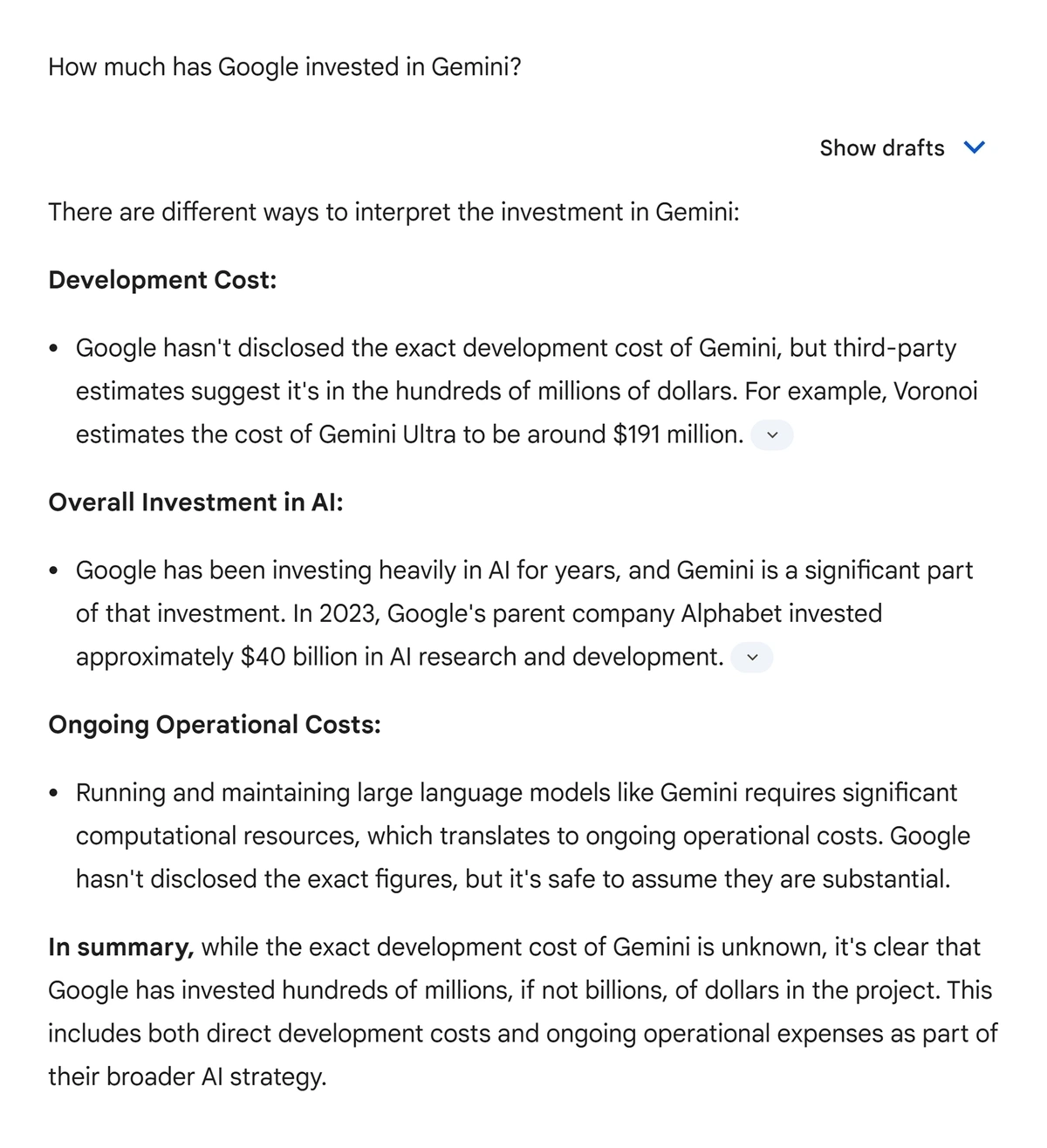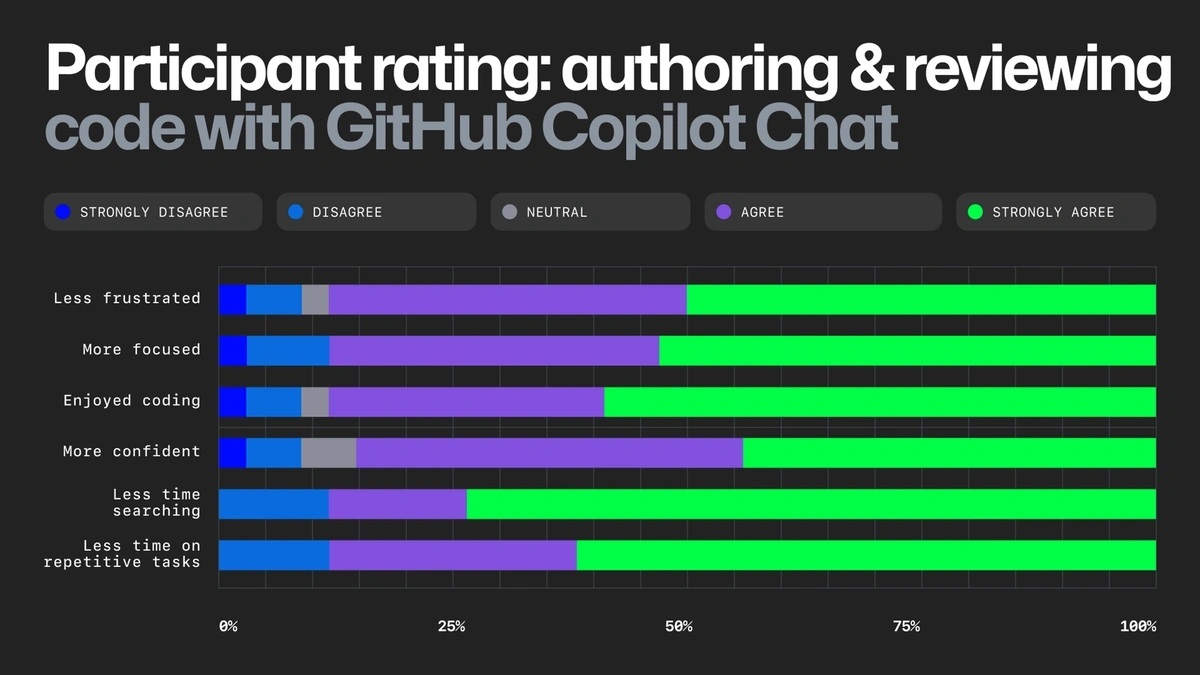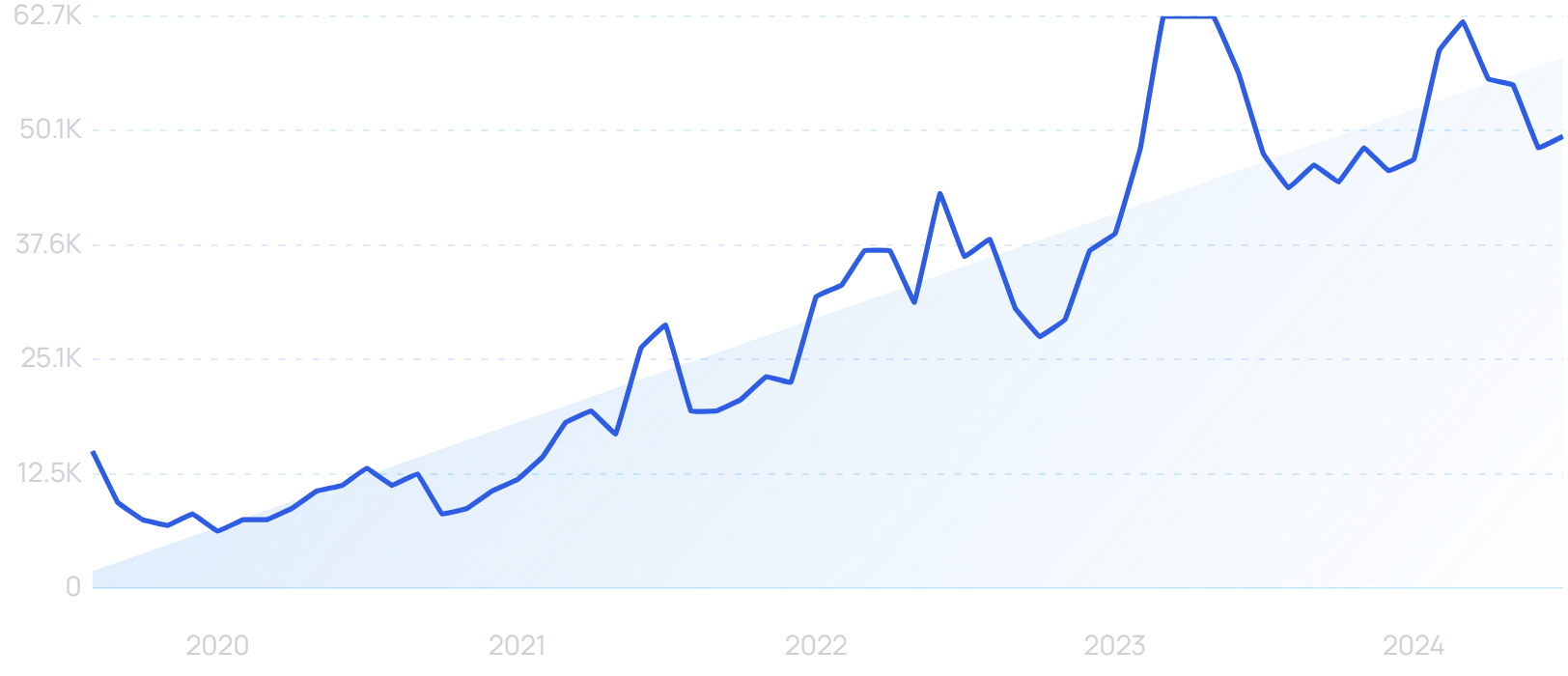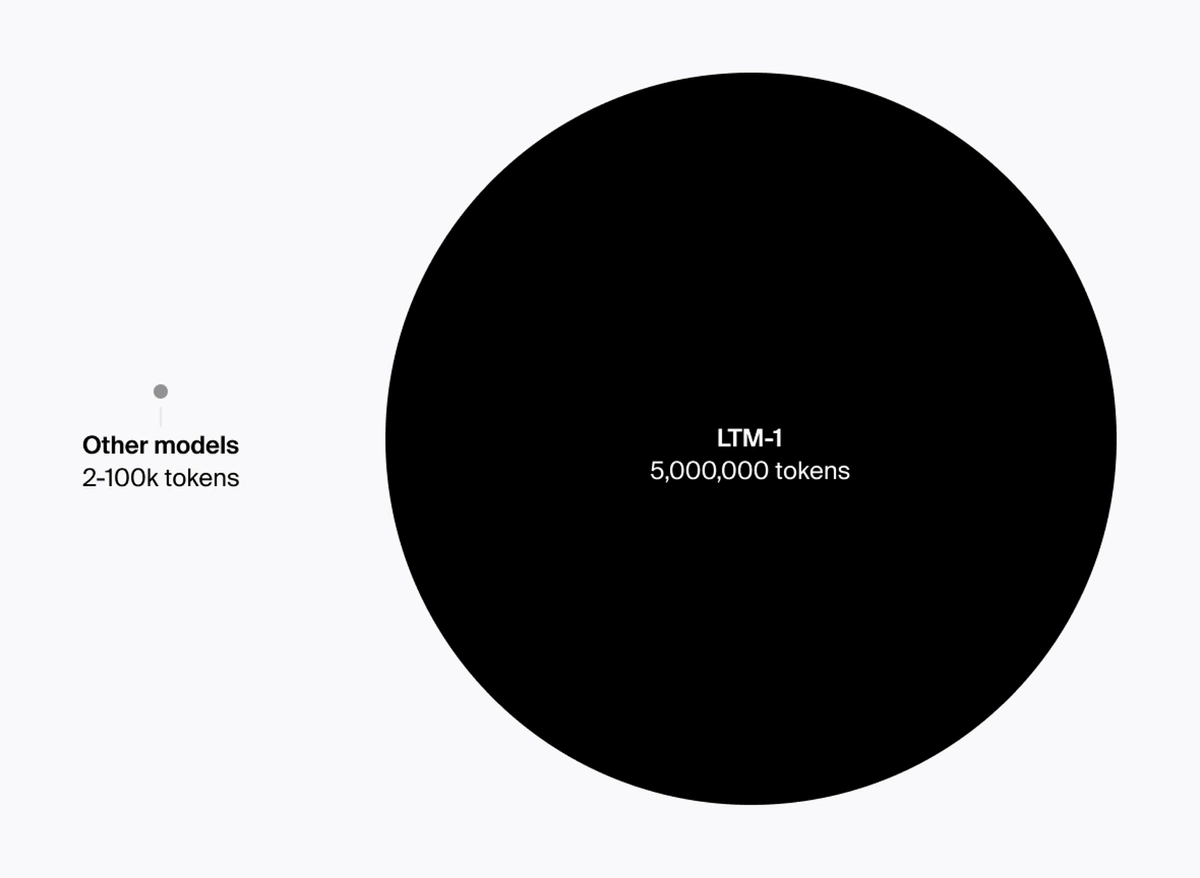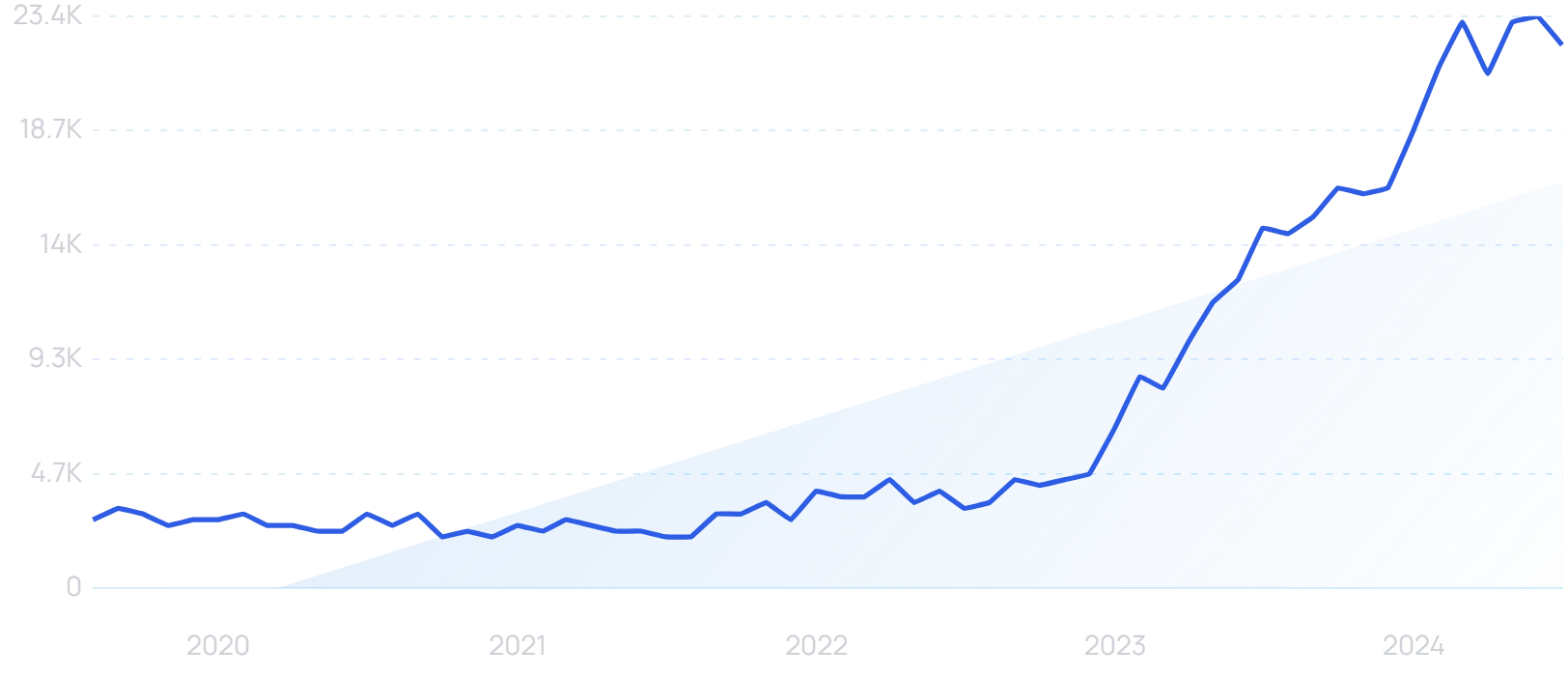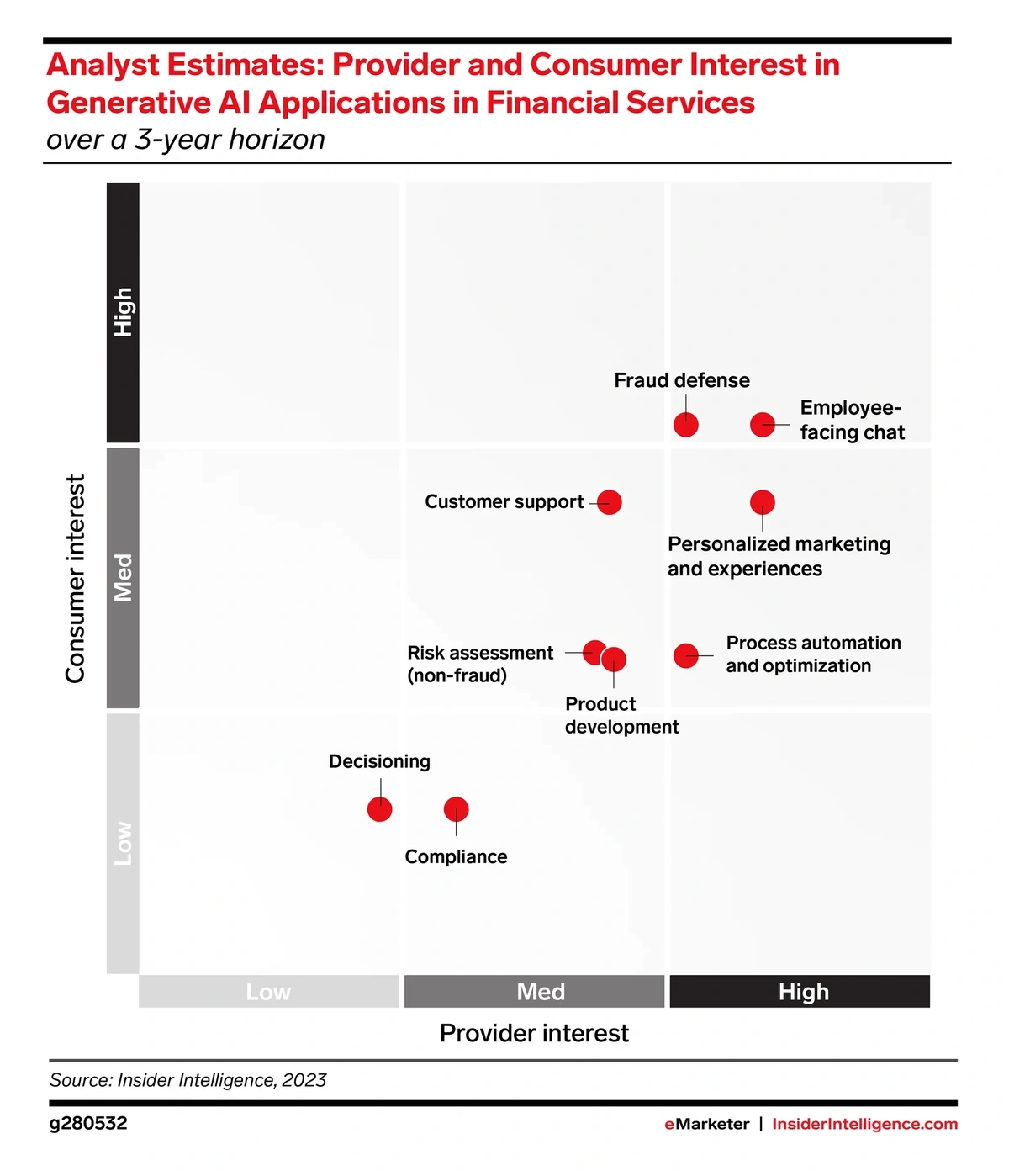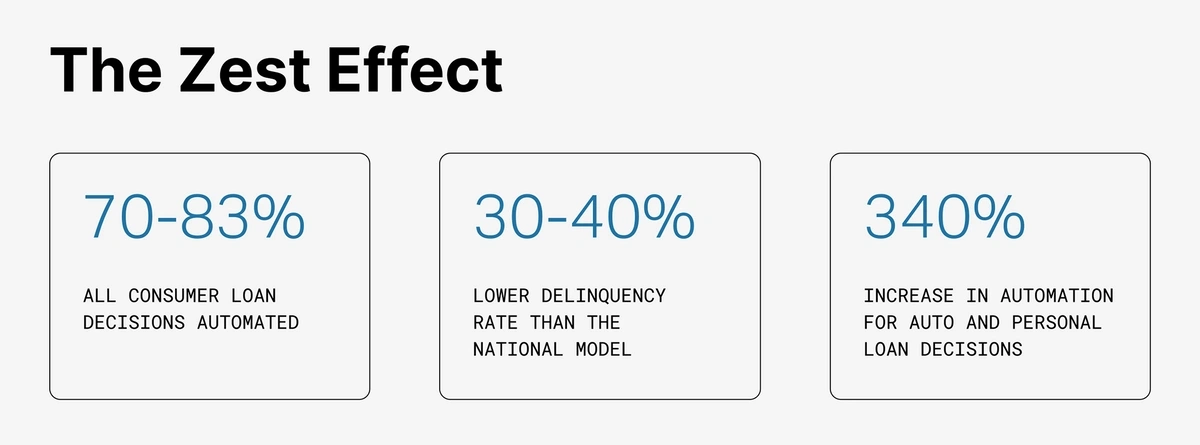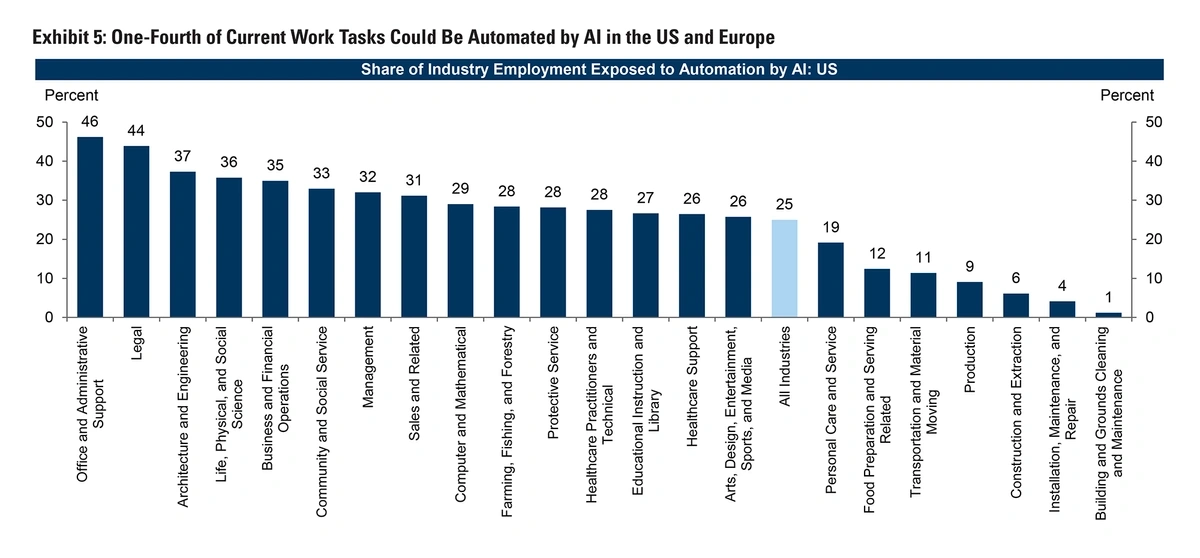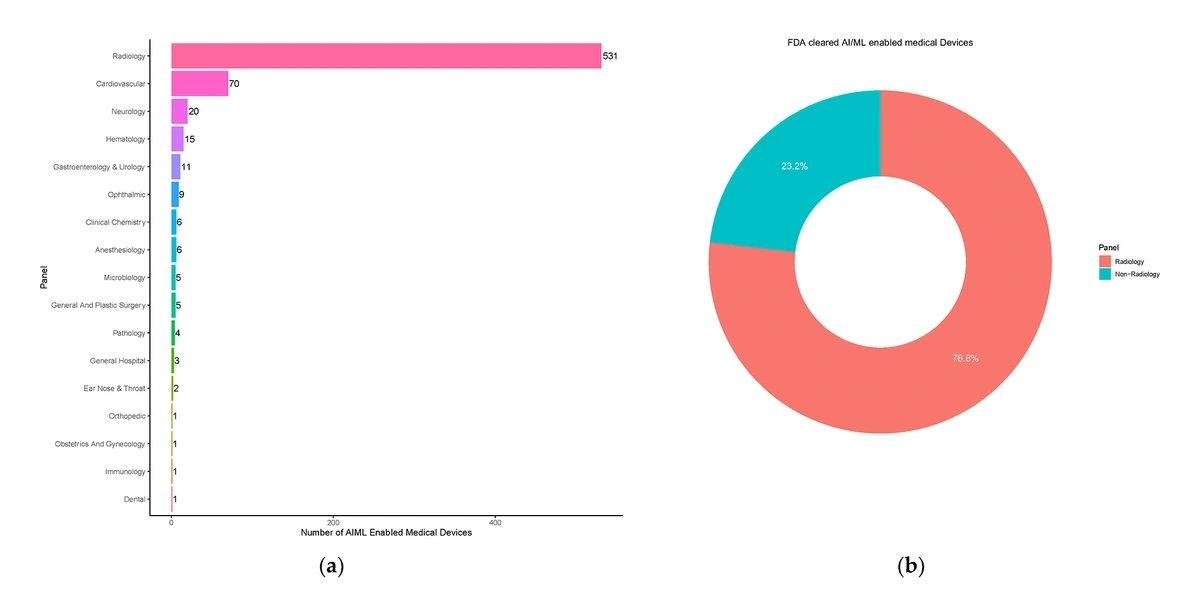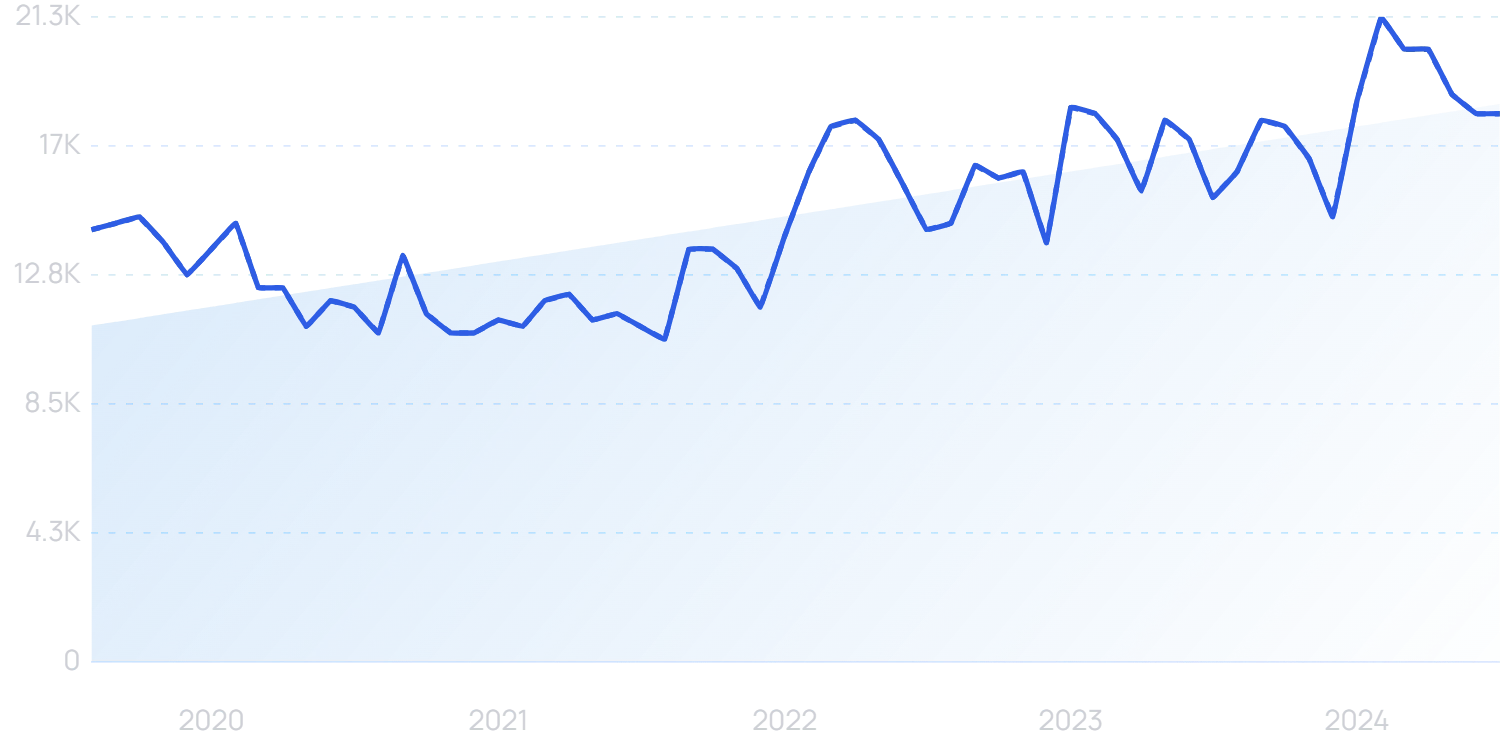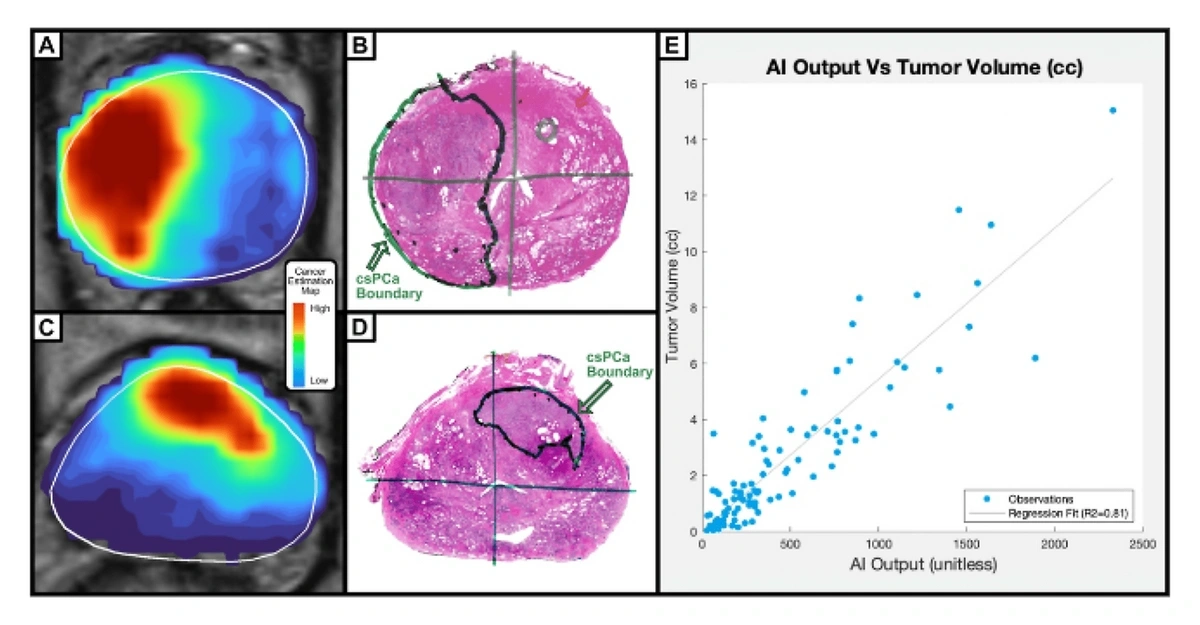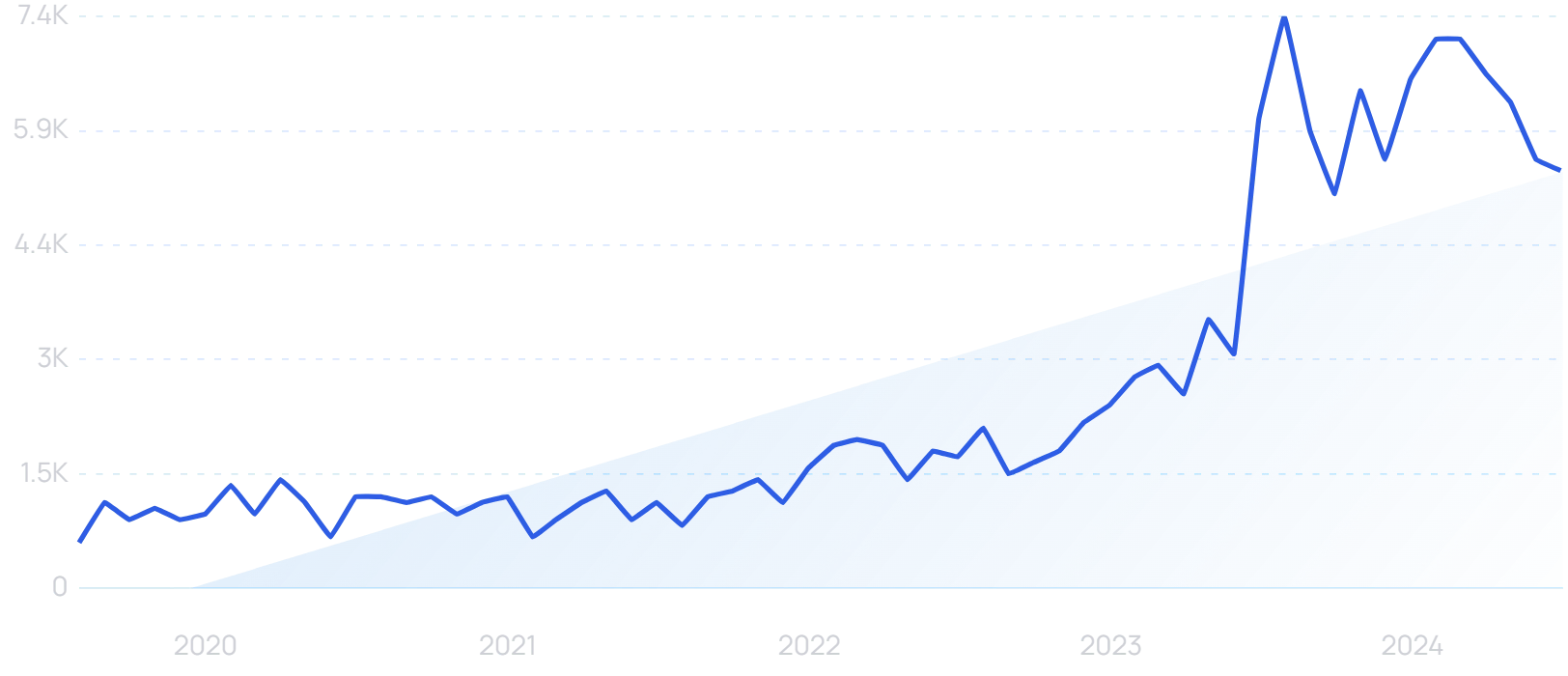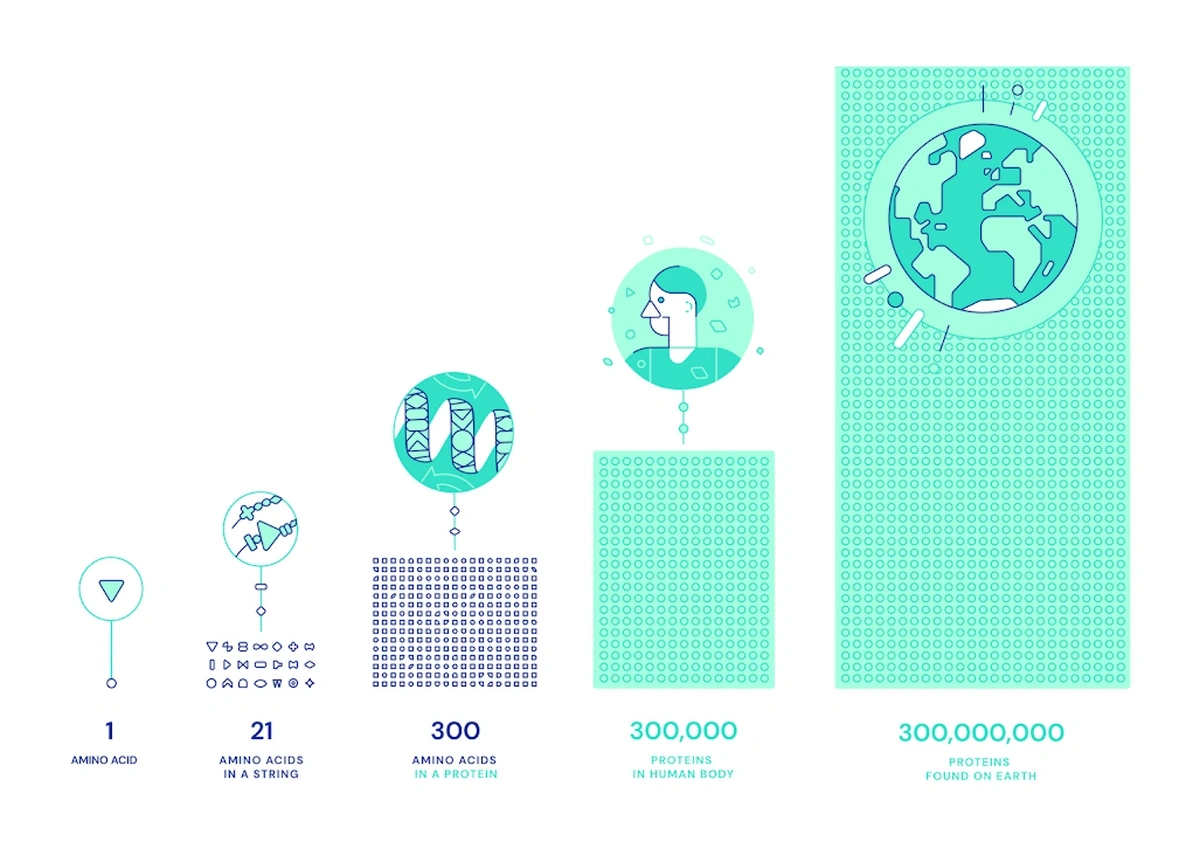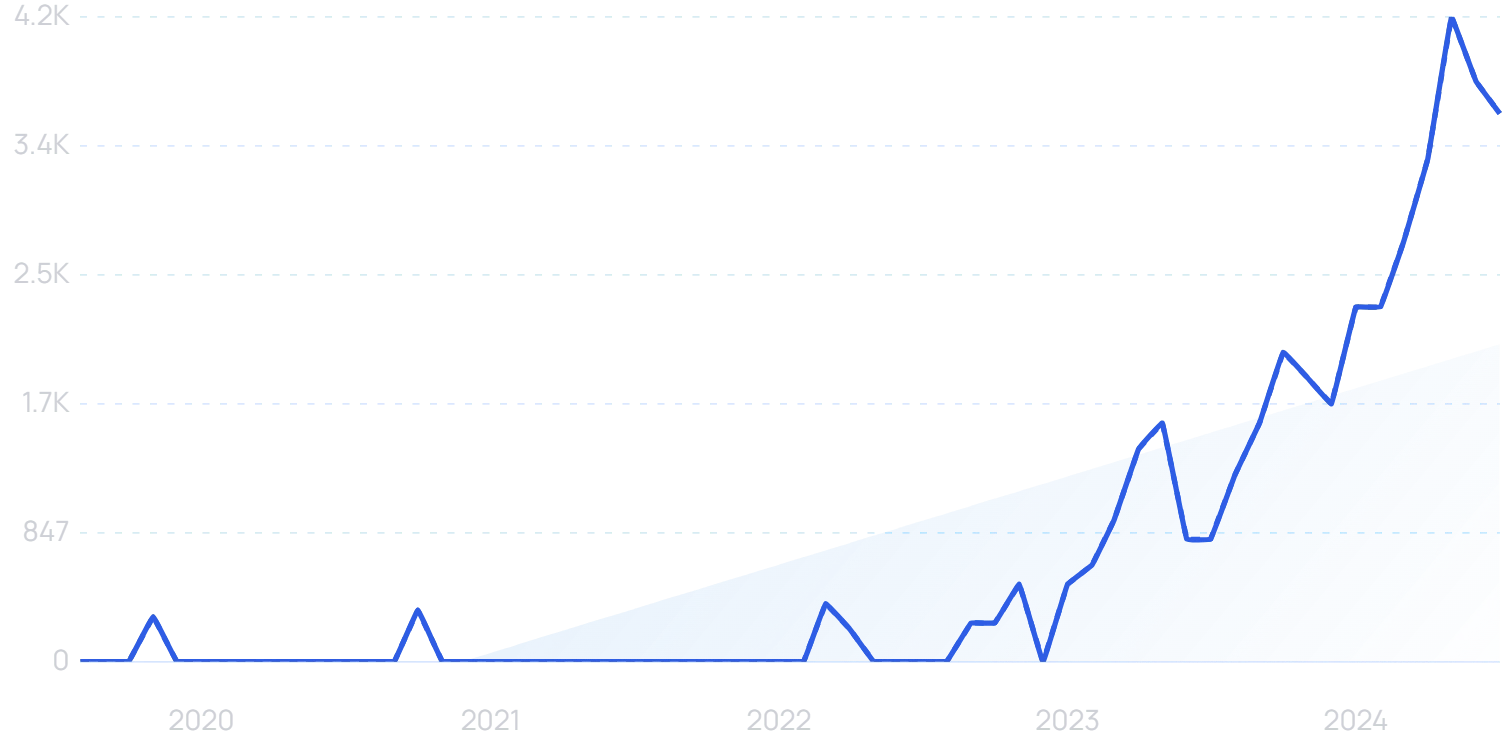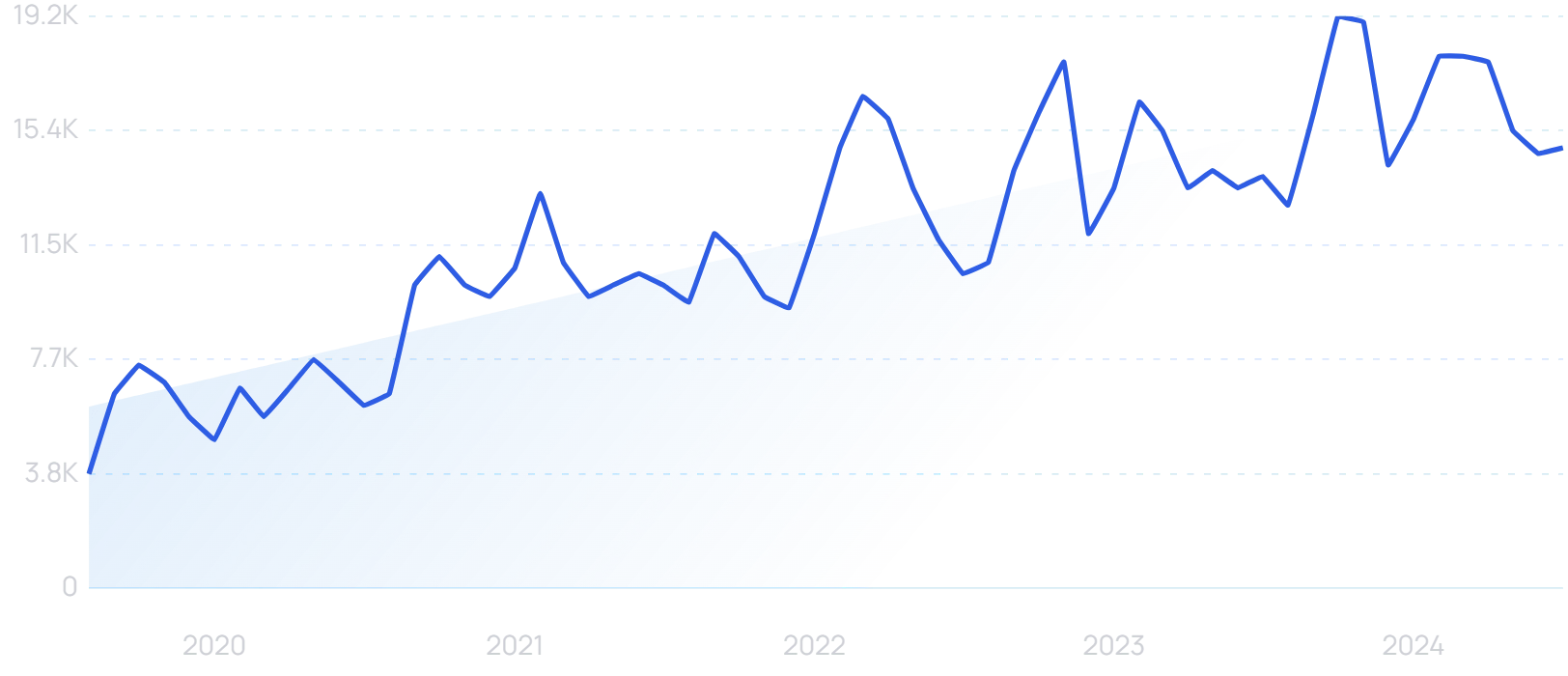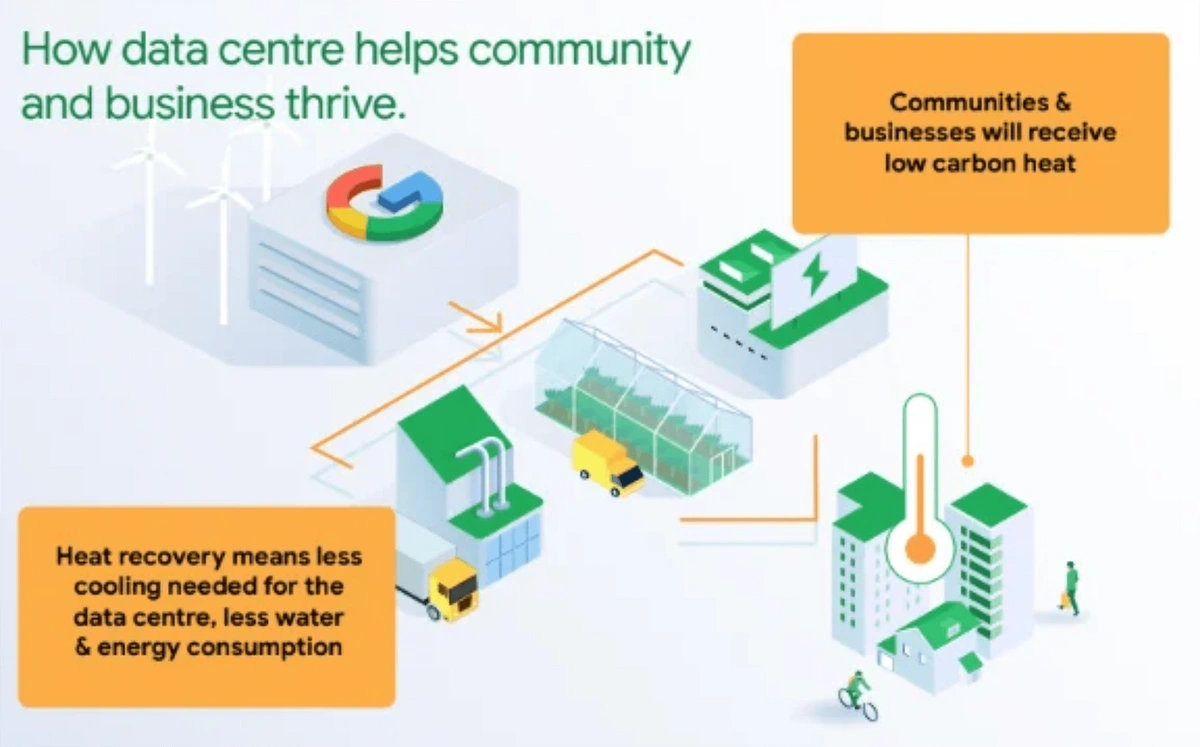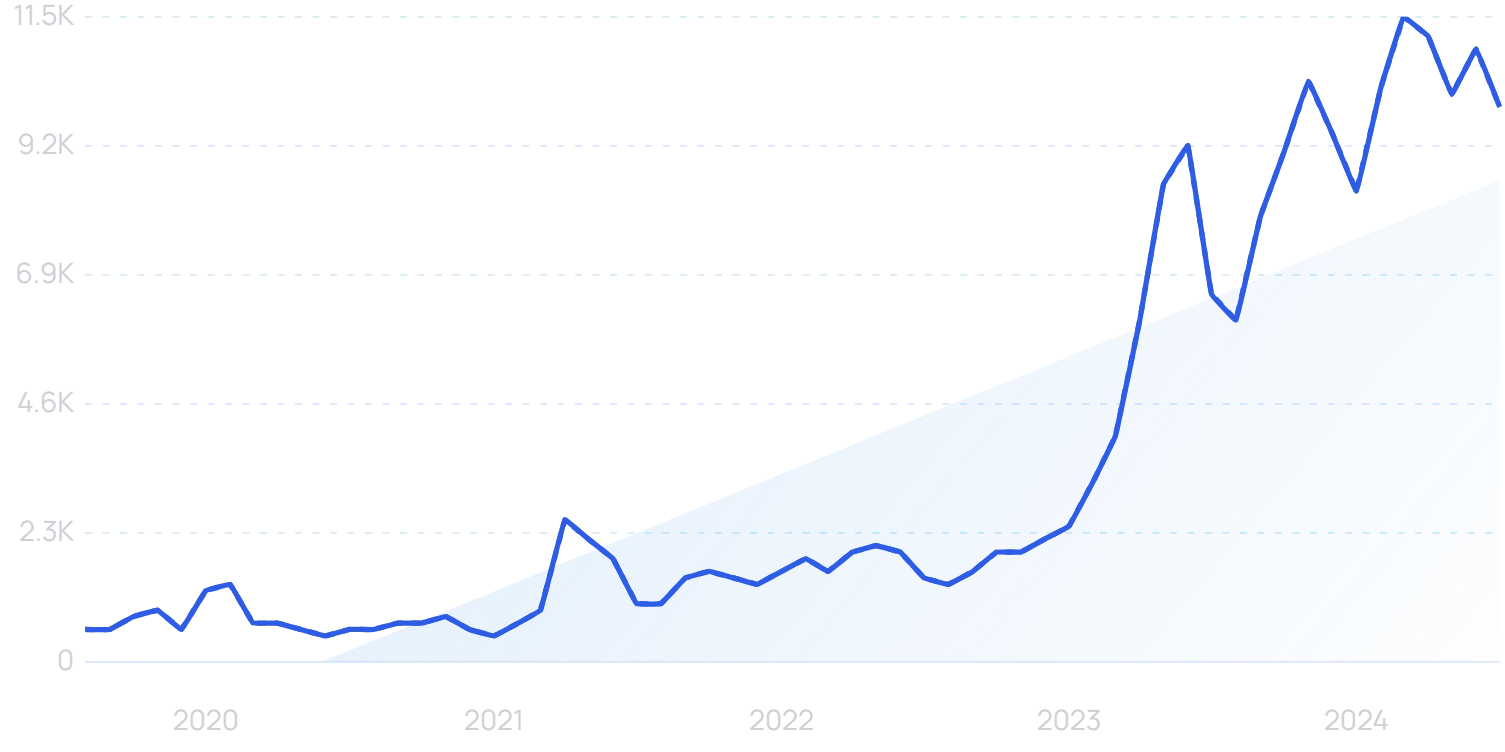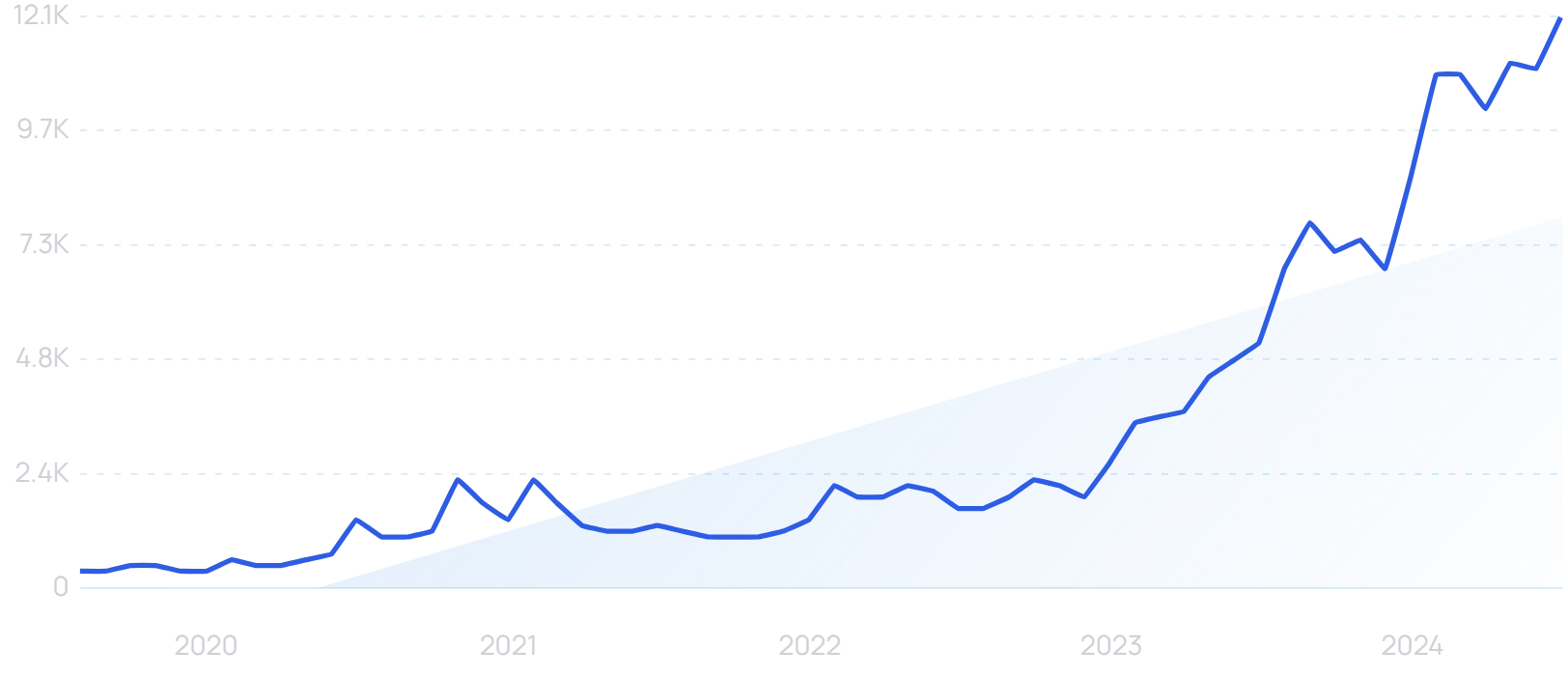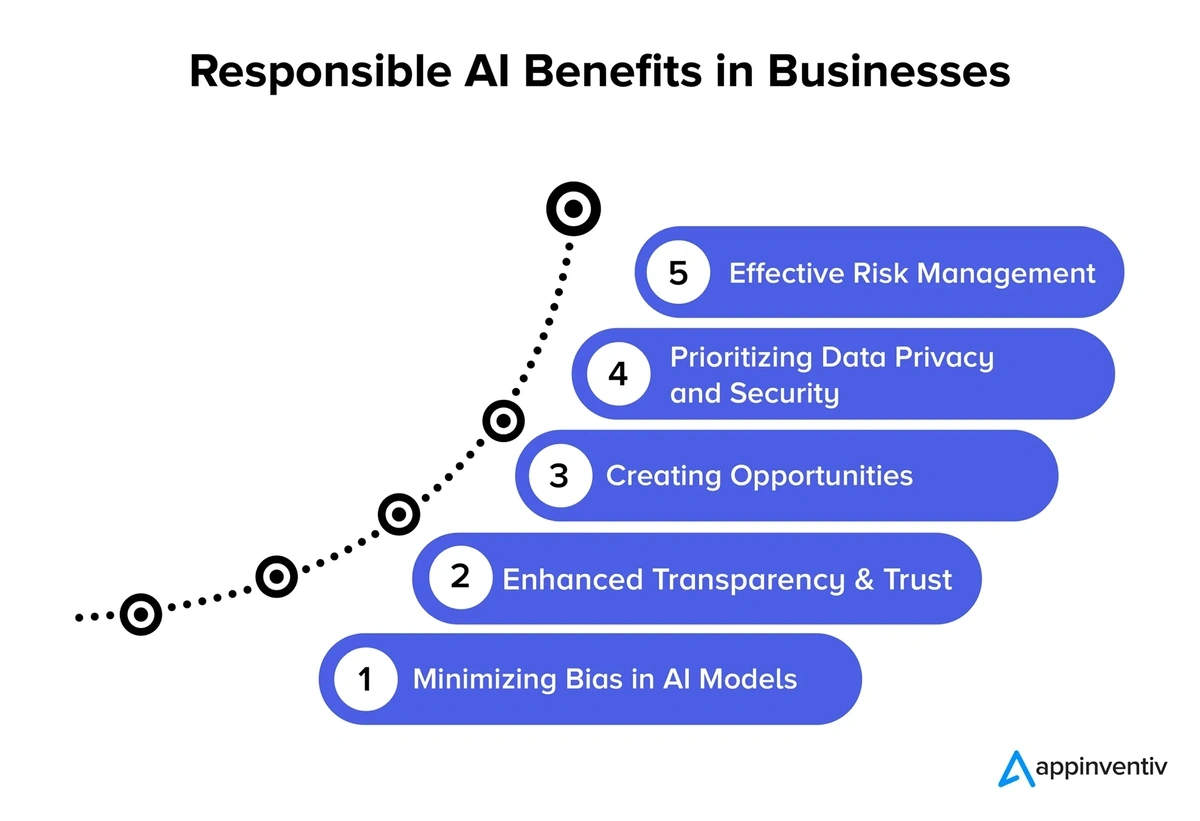
Future of AI: 7 Key AI Trends For 2025 & 2026
In the last decade, artificial intelligence (AI) has rapidly evolved from a theoretical concept to a practical tool that is already transforming many industries.
However, the true potential of AI is yet to be fully realized.
With the potential to add $4.4 trillion to the economy annually, developments in the coming years will provide one of the most significant economic opportunities of our time.
But as with any transformative technology, there are also challenges and risks ahead.
In this report, we’ll examine 7 key trends shaping the future of AI.
1. AI Changes The Way We Work
There’s little doubt we’ll see advances in AI technology over the coming years.
But the existing technologies could already automate work activities that take up between 60 and 70% of employees’ time.
In that sense, it will only take an increase in uptake in order to dramatically alter the dynamics of the workplace. In fact, 50% of workplace leaders in the Americas (and 52% in Europe) already welcome the adoption of AI and machine learning.
Traditionally menial tasks in the professional sphere provide the obvious first steps for AI involvement. For instance, interest in AI note-taking has skyrocketed.
Searches for “AI note-taking” are up 8800% in 5 years.
The concept barely registered on the public psyche five years ago. But now it’s very much a reality.
In fact, according to exclusive Exploding Topics research into AI in the workplace, more than 1 in 4 people now use AI at work for meeting summaries or note-taking.
Even more notably, 64.78% are using generative AI for writing reports, emails, and presentations.
Otter AI is one automated transcription service.
“Otter AI” searches have increased by 3233% in the last 5 years.
Otter has transcribed over 1 billion meetings. And its 2023-launched OtterPilot service, which uses more advanced AI to generate meeting summaries and suggest follow-up tasks, has been used in more than 50 million meetings.
Entire industries have the potential to be transformed by AI.
Take a look at the growth in searches for AI recruitment:
Searches for “AI recruitment” are up by 488% in 5 years.
And the reality is that society will need to rise to meet these changes. One possibility is growth in calls for a Universal Basic Income.
“Basic income” searches are up 235% in 10 years.
Basic incomes are a form of universal benefit. The idea being that everyone is given a kind of safety net as certain jobs disappear from the workforce entirely, encouraging more creative and educational endeavors in the process by reducing financial pressures.
More than 100 UBI pilots are currently being carried out in the US. Geoffrey Hinton, known as the godfather of AI, is among those advocating for such schemes.
2. AI Gets Smarter
New use cases for AI are springing up almost daily.
But even as AI transforms a variety of industries, work is being done to make the underlying technology smarter, better and safer.
ChatGPT now dominates discussions of AI. That’s no real surprise, with $13 billion of investment from Microsoft into creator OpenAI.
Searches for “ChatGPT” are up 8300% in 2 years.
And while GPT-4 was a game-changer, GPT-5 is already on its way. Early versions have been demoed to industry insiders.
CEO Sam Altman predicts it will be a “significant leap forward”. And forecasts it will cut out a lot of the factual mistakes GPT-4 can sometimes make.
But while OpenAI was fast to the technology, competitors are coming.
Google has introduced Gemini. It’s already getting more than 300 million visits per month.
We asked Gemini how much Google had invested into the technology.
There’s also Claude AI.
Searches for “Claude AI” have grown by 7000% in 2 years.
Claude was created by Anthropic, which was founded by former OpenAI members with a focus on AI ethics. It’s been backed by Amazon to the tune of $4 billion, while Google has also invested heavily.
3. AI Evolves As A Software Development Tool
Software development is one area where we can expect AI to continue disrupting.
It has given rise to the concept of "vibe coding": programming by giving plain-language prompts to AI, without actually writing any code at all.
(That in turn has spawned related ideas like vibe marketing.)
Not only can AI generate code, but it can also review and test code with the goal of detecting bugs and errors.
Utilizing AI can already make the software development process at least 25% faster.
And some developers estimate that around 30% of the code they write could be handled by AI.
Using an AI coding platform such as GitHub’s Copilot can lead to faster completion of coding tasks and less attention to repetitive tasks.
OpenAI did have a specialized Codex tool for code generation. But it was deprecated last year, in part because the latest versions of ChatGPT are more than capable of deployment in software development.
A recent study found that ChatGPT could solve certain coding problems at a success rate of 89%.
Although that dropped to 40% for the hardest problems, and fell significantly again for more recent problems on which the model would not have been trained.
GitHub’s Copilot is the most popular dedicated code-generating AI platform right now.
Search volume for “GitHub Copilot” has increased rapidly in recent years.
Software engineers enter prompts or begin a chunk of code, and the platform automatically creates what they need to complete the code.
There are 1.3 million paid Copilot accounts across more than 50,000 companies.
And almost half of all the code written on the platform is now AI-generated.
Company officials predict that will increase to 80% by 2027.
Github is owned by Microsoft. And a number of the other familiar tech giants are also muscling in on the scene.
Google’s Gemini Code Assist supports more than 20 programming languages.
When Wayfair adopted Gemini, it found that environments could be set up 55% faster.
Meanwhile, Amazon shook up the market when it announced its Q Developer tool would have a free subscription tier.
National Australia Bank reports accepting 50% of coding suggestions from Q Developer.
Smaller companies are impacting the market too.
Tabnine features an AI-powered test generation tool to accompany its code generation tool.
Search volume for “Tabnine” has exploded in recent years.
It boasts over a million users of its own. And raised a $25m Series B round last year.
Build a winning strategy
Get a complete view of your competitors to anticipate trends and lead your market
Magic AI is another startup company looking to challenge Copilot’s dominance in the future. Key to this plan is the use of huge context windows.
Magic AI says its platform will be like having a colleague inside the computer to assist with coding tasks.
It claims to be “on a direct path” to Artificial General Intelligence (AGI), the hypothetical next step for AI that features human-like reasoning and critical thinking skills.
Although the most common prediction does not foresee AGI being achieved until 2300.
Magic has raised $145m, including a huge $117m Series B this year.
Despite the buzz, its actual platform isn’t available yet.
4. AI Changes The Finance Landscape
McKinsey estimates that AI-powered improvements in productivity could add an extra $340 billion of value per year to the banking sector, if all use cases were implemented.
And research from Citi found that AI could increase the industry’s profits by 9% in the next four years, taking them close to the $2 trillion mark.
Searches for “AI in finance” are up 809% in 5 years.
Autonomous finance includes everything from customer service chatbots to automated forecasting to AI-powered fraud detection.
With AI, tasks like fraud monitoring, customer support, and personalized marketing can be automated.
50% of finance CFOs plan to implement AI within customer experience tools in the next 12 to 18 months.
And almost 1 in 4 (24%) are already using AI when it comes to fraud prevention, with a further 36% planning to introduce it.
Data from NVIDIA shows most AI interest in the financial sector is focused on data analytics.
Almost 7 in 10 financial services professionals say their company has adopted AI for data analytics.
Advanced analytics ties into fraud prevention, with AI able to comb datasets for sophisticated fraud patterns.
There’s also a risk management element, with anomalies in investments and loans able to be identified more easily.
For example, Zest AI offers an AI platform focused on lending.
Their AI helps banks spot good borrowers and avoid those who are likely to default.
It can actually challenge human bias: Zest has helped lenders increase approvals for Latinos by 49% and Black applicants by 41% while keeping risk constant.
And its customer base has grown by 50% annually since 2020.
One credit union with assets of $2.2 billion automated between 70 and 83% of all its consumer loan decisions after implementing Zest’s platform.
AI-powered lending benefits banks and borrowers.
Portrait Analytics is another company looking to drive bottom-line results in the finance industry.
The startup’s offering is an AI investment analyst.
It’s a natural language processing platform that’s based on generative AI.
Analysts usually spend hours reading and analyzing company filings, but this AI application extracts that data and automatically summarizes the key information.
It’s as much as 10x faster than human analysts, which allows firms to save time and realize new investment opportunities before the competition.
The company raised $7m in seed funding last year.
5. Healthcare Further Embraces AI
Goldman Sachs reports that more than 25% of the work done by healthcare professionals in the United States could currently be automated by AI.
Goldman Sachs estimates that 28% of work done by healthcare practitioners could be automated by AI.
Researchers from McKinsey and Harvard estimate that AI-enabled cost savings could top $360 billion per year within the next five years.
There’s already a history of AI being used for things like radiology, pathology, and patient monitoring.
It was even used as part of the development of COVID-19 vaccines.
In total, more than 650 AI-enabled devices have already been approved by the FDA. These are AI applications that directly impact patient care.
The vast majority of current AI applications are in radiology.
The first algorithm was approved in 1995, but there wasn’t much development until 2019. Between that year and 2023, there were more than 400 algorithms approved.
And new AI developments are surging.
Precision medicine is one potential application of AI in healthcare.
This refers to each patient being treated based on individual, unique parts of their DNA, medical history, imaging, and so on.
AI platforms will be able to analyze all of the patient’s data and recommend a tailored course of treatment specifically for that patient.
Today, this exists in the form of treating patients based on specific gene expressions, like certain cancers.
However, experts say the AI technology will soon encompass more data points and be applicable to diseases like Alzheimer’s, obesity, and depressive disorders.
Searches for “precision medicine” have grown by 26% in the last 5 years.
In one current example, Avenda Health has launched an AI platform for managing and treating prostate cancer.
The solution combines patient data, imaging, biopsies, and pathology into a deep-learning algorithm. It then determines the extent of the cancer and creates a 3D cancer estimation map along with optimal treatment possibilities.
In clinical trials, the use of the platform resulted in treatment changes 28% of the time. Most often, these changes resulted in more localized treatment of the cancer.
Avenda claims that its AI can identify 159% more cancer than MRI alone.
Avenda’s Unfold AI system improves location mapping and treatment of prostate cancer.
Some in healthcare believe that AI may even go as far as replacing physicians in many aspects of the job.
Researchers from The Kellogg School of Management at Northwestern University say this transformation may be as little as a few decades away. But, they caution, there will still be a need for empathy, compassion, and human interaction from doctors.
Another future application of AI in healthcare is in pharmaceutical development.
Search volume for “AI drug discovery” is up 929% in the past 5 years.
The total expense involved in bringing a drug to final approval is estimated at an average of $1 billion. And that’s for those that make it all the way, with the process of development notoriously hit-and-miss.
Among drugs that reach human clinical trials, 90% fail, primarily because of inefficacy or unexpected side effects.
AI technology has the capability to dramatically increase the speed of getting drugs into the hands of patients.
One of the main ways in which AI does this is by mining the massive amounts of data created in the development process.
Consider that AI could sort through all of this data in a fraction of the time that it takes human researchers to do the same.
AI could notice a specific molecule that unlocks a new treatment or link data from various studies to come up with better drugs.
Meanwhile, Google is betting on the idea that more sophisticated AI models don’t actually need as much data.
Its AlphaFold3 model, a collaboration between DeepMind and AI drug discovery firm Isomorphic, predicts how molecules and proteins will react.
With so many proteins in existence, manually testing their molecular composition and how they all interact is slow and inefficient. AlphaFold tries to solve this problem.
When it comes to predicting local structures, AlphaFold3 reached 97% of its maximum performance within 20,000 training steps.
AI can also be used to conduct human-like trials in the place of animal trials.
That’s the case for a potential ALS drug created by Verge Genomics through AI.
The company’s AI is able to utilize human data to create human models on the platform and use those to test the drug.
Verge’s drug is now in the second stage of human trials. Phase 1 found the ALS drug to be safe, well-tolerated and potentially best-in-class.
Exscientia, an AI drug discovery company founded in 2012, currently has two drugs in human trials, one aimed at treating cancer and one aimed at treating inflammatory diseases.
Search volume for “Exscientia” has jumped 529% in the past 5 years.
The company spent $29.8 million on further research and development in Q1 2024.
And Nvidia and Pfizer recently invested $80 million into another AI drug discovery business, CytoReason.
6. AI Confronts Environmental Questions Head-On
In the future, questions surrounding AI and its impact on the environment will likely continue to swirl.
On one hand, AI applications could improve sustainability and lead to innovative environmentally-friendly practices.
However, the technology behind AI requires massive amounts of computational resources, which are characteristically damaging to the environment.
“AI environmental impact” is an area of growing concern.
AI computing demands are growing quickly.
Google’s emissions have climbed by almost 50% in the last 5 years, and it cited the environmental impact of AI as one of the reasons its net-zero 2030 target “won’t be easy”.
The “AI overviews” it presents in response to search queries consume 10x more power than a traditional Google search - equivalent to talking for roughly an hour on an old-school home phone.
AI is power-intensive.
Unfortunately, the negative impact on the environment begins long before the AI system is up and running. The manufacturing of AI solutions is also problematic.
Manufacturing computer chips requires huge amounts of energy, uses billions of gallons of fresh water, and discharges hundreds of tons of hazardous waste.
But AI has helped society make incredible strides toward a more sustainable future, too.
PwC estimates that using AI for sustainability applications could reduce global greenhouse gas emissions by as much as 4% by 2030.
AI applications have the potential to increase GDP by 4.4% by 2030.
The technology is utilized for making calculations and predictions about the environment based on a huge amount of data. AI can see trends and patterns that are nearly impossible for humans to see.
For instance, AI has been trained to measure changes in icebergs 10,000 times more quickly than humans can.
While NASA and IBM have trained a model specifically designed to help tackle environmental issues, and made it free to access.
On a more day-to-day level, AI technologies can have an impact on sustainability in a variety of industries.
AI can enable agriculture sensors so farmers use less water, help restaurants identify and prevent food waste, and decrease energy use in factories, just to name a few examples.
The technology is also instrumental in the clean energy sector.
Search interest in “energy transition” is up 305% in the past 5 years.
In the wind energy sector, AI has a wide variety of applications.
It can help with the scheduling of construction, where highly-specialized teams are often booked up two years ahead of time.
And once wind farms are up and running, AI can enable better monitoring of the turbines. That can increase their life-span by 10%.
Meanwhile, as AI helps clean energy, clean energy helps AI, tackling the problem of energy-intensive data centers.
Google’s Hamina data center in Finland is 97% carbon-free, and its heat recapture technology will meet 80% of heat demand in the district.
Google’s Hamina data center in Finland runs highly efficiently.
7. Governments Get To Grips With AI Regulation
The regulation of AI is a factor that many will be watching in the coming months and years.
Search volume for “AI regulation” has climbed 1,440% in 5 years.
The 2024 Edelman Trust Barometer found that only 30% of Americans trust AI technology. Interestingly, Democrats were significantly more likely to do so (38%) than Republicans (24%).
And trust in AI companies has actually fallen - from 50% in 2019 to just 35% today.
Elon Musk and other tech executives asked for a six-month pause on the development of AI models more advanced than GPT-4, a plea which fell on deaf ears. But we are seeing a regulatory response.
The EU has passed an “Artificial Intelligence Act”, which will see the Commission establish an AI Office, and impose checks and regulations on “high-risk” AI systems.
Federal legislation in the US is yet to arrive. But an executive order has been passed that requires “the most powerful AI systems” to share safety test results with the government, among other things.
At the state level, Colorado became the first state to pass comprehensive AI legislation. In May 2024, it passed the Colorado AI Act.
Effective from February 2026, it mirrors the EU in defining “high-risk” AI systems - ones that “when deployed, make, or are a substantial factor in making a consequential decision”.
The legislation imposes duties on those systems to take care to avoid bias and discrimination.
It’s clear that the drive for responsible AI is underway.
Search volume for “responsible AI” is up 3233% since 2019.
The key tenets of responsible AI center on developing and deploying the technology in a fair and trustworthy way.
It also means that organizations ensure transparency, minimize bias, protect data, and provide a way for individuals to raise concerns.
Organizations deploying responsible AI are watching for potential bias and promoting transparency.
Still, some in the industry say government regulation isn’t needed to achieve this. Amazon, Anthropic, Google, Inflection, Meta, Microsoft, and OpenAI all made voluntary self-regulation commitments to the White House last year.
And critics warn that government regulations could slow progress and set the United States up to fall behind China in terms of dominating the future global technology.
Conclusion
As AI continues to advance, it will not only change the way companies operate but also the way individuals live. From personalized healthcare to automated investing, AI has the potential to revolutionize nearly every aspect of business.
Of course, there are many challenges associated with the future of AI technology. But there are countless opportunities available for bold innovators, and a proliferation of AI courses and certifications are helping people get to grips with it.
The future of AI is certain to be a rapidly evolving landscape.
Stop Guessing, Start Growing 🚀
Use real-time topic data to create content that resonates and brings results.
Exploding Topics is owned by Semrush. Our mission is to provide accurate data and expert insights on emerging trends. Unless otherwise noted, this page’s content was written by either an employee or a paid contractor of Semrush Inc.
Share
Newsletter Signup
By clicking “Subscribe” you agree to Semrush Privacy Policy and consent to Semrush using your contact data for newsletter purposes
Written By


Josh is the Co-Founder and CTO of Exploding Topics. Josh has led Exploding Topics product development from the first line of co... Read more



